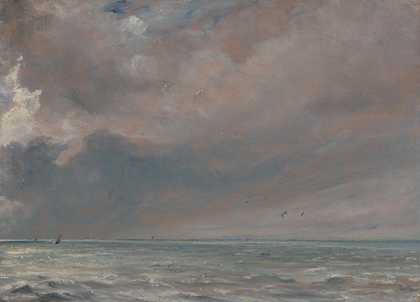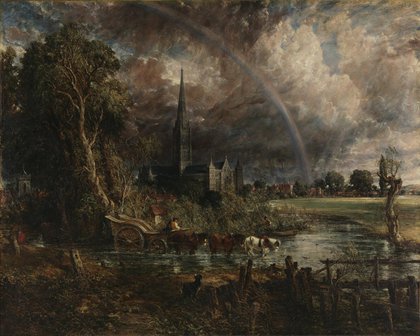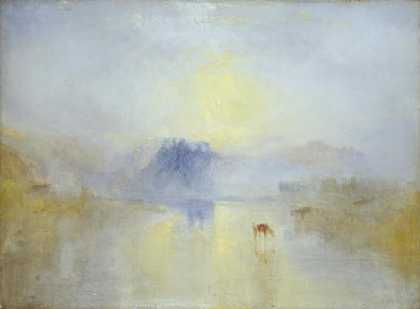
John Constable
The Sea near Brighton (1826)
Tate
It’s a clear, spring day of blue skies and I’m at the coast with the sound of the waves and the gulls. Out at sea, ships are sailing by, but their doings are no longer mysterious. An app called Marine Traffic allows you to identify every one. That long, low, red and black vessel heading east is the Sea Dragon, a crude oil tanker. The grey one moving north? That’s a supply support vessel, registered in Greece. Its destination is the huge, new wind farm 15 kilometres offshore.
Soon we will be ringed by wind farms. There’s Rampion and, soon, Rampion 2 off Brighton, as well as the London Array; East Anglia ONE; Sheringham Shoal; Hornsea; Humber; Dogger Bank A, B and C; the massive Berwick Bank; Seagreen here at Fife; and so north to the Moray Firth and the Northern Isles. Our kids play with buckets and spades, within sight of slowly turning vanes.
We know why it’s happening. In Constable’s time, CO2 emissions were negligible. Now we’re belching out 36 gigatons a year. The oceans are warming, acidifying, rising. Poking along the shore among weed and shells, I collect a bagful of plastic trash, which I’ll tip into a bin the council has provided for the purpose. Now all part of the coastal experience, along with the brine and the wind.
So isn’t this little painting poignant, in its feeling of grandeur? Constable admired the sea’s ‘magnificence’, and it is magnificent, but the sea is changing, and so its meanings change too. He also noted ‘the sentiment of melancholy always attendant on the ocean.’ A nostalgia trip is a fool’s errand, but I think his sketch provides a different kind of melancholy now, reminding us of just one day at the dawn of the industrial age.
The Sea near Brighton was bequeathed by George Salting in 1910.
Kathleen Jamie is a poet and Scotland’s fourth Makar.
To read more of our special feature celebrating Tate Britain's rehang, visit www.tate.org.uk/tate-etc/issue-58-summer-2023/alex-farquharson-tate-britain-the-state-were-in



